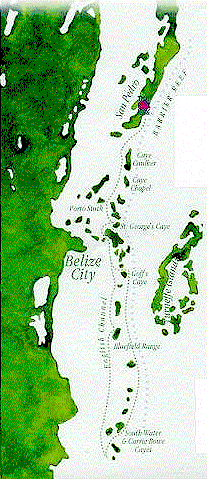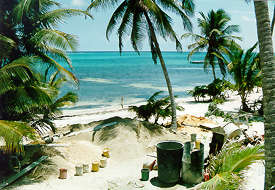|
| 
The Hidden Treasures of the CoastThe presence of the world's second largest coral reef is not the only factor contributing to Belize's rich and diverse coastal environment. The entire coastline of Belize is also marked by coastal lagoons, estuaries, and wetlands, ecosystems that are among the most fertile and productive in Belize. Despite the considerable ecological value of these areas, they are often taken for granted and neglected.

As with other coastal ecosystems, land-based activities pose a major threat towards lagoons, estuaries, and wetlands. Areas altered by housing development or agricultural expansion are impacted either directly by the destruction of mangroves and/or beaches, or indirectly with the introduction of agrochemicals into the sediment. As a result of these pollutants and industrial effluent, water quality tends to be negatively effected. Dredging and sand mining activity exacerbates the problem of poor water quality by resuspending sediments that often contain an accumulation of toxins. Despite the numerous threats facing lagoons and estuaries, there is some encouraging news. Green Reef recently attended a workshop that addressed ways to more efficiently collect data in river and coastal systems of Belize. There is currently a lack of information detailing how severely these ecosystems are impacted by human activity, such as development. For these ecosystems to be effectively protected, further research, such as identifying contaminant pathways in rivers, needs to be conducted. Hopefully, scientists and researchers throughout Belize will take a vested interest in these essential coastal ecosystems. In the meantime, Green Reef will do its part to watch over the lagoons, estuaries, and wetlands in and around Ambergris Caye. Check out Reef Brief next week when we will look at one of the estuaries most famous inhabitants, the manatee. This Reef Brief was written by Ann Hayden.
|
 Copyright by Casado Internet Group, Belize |